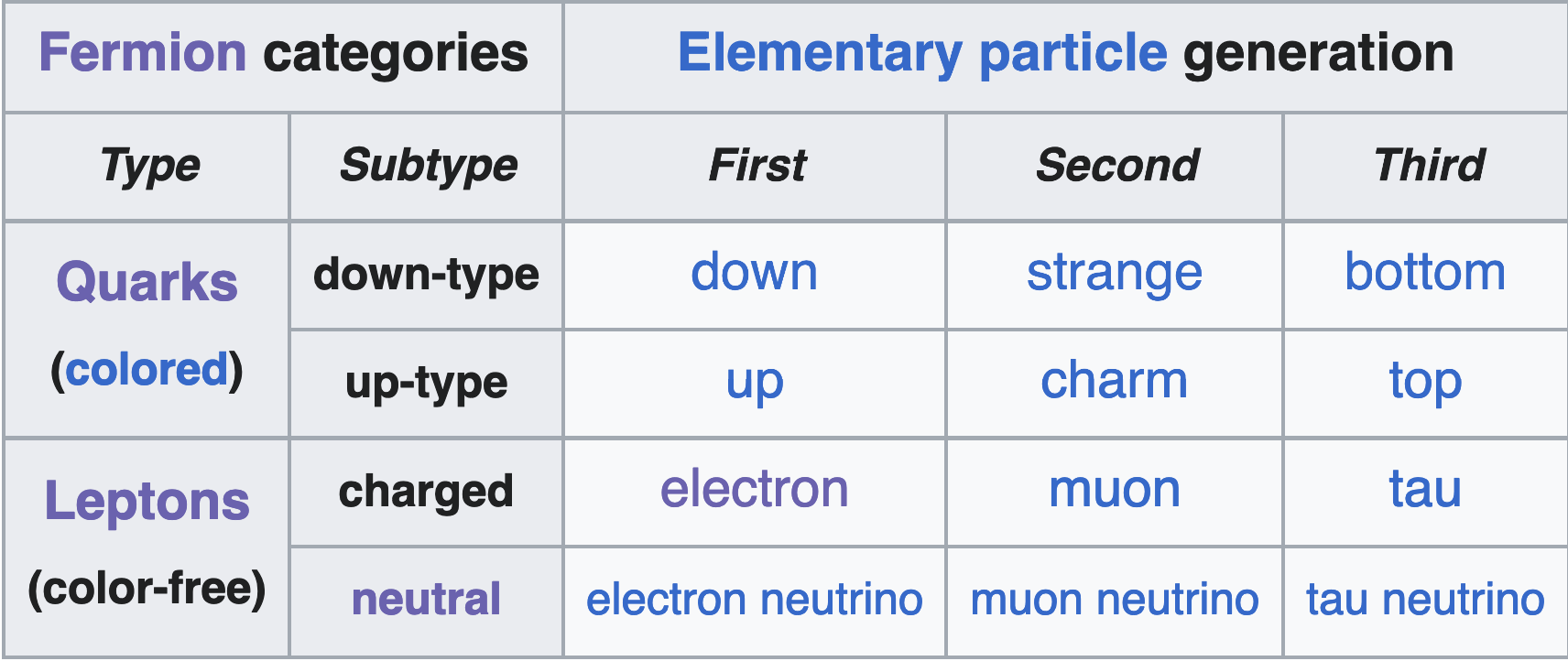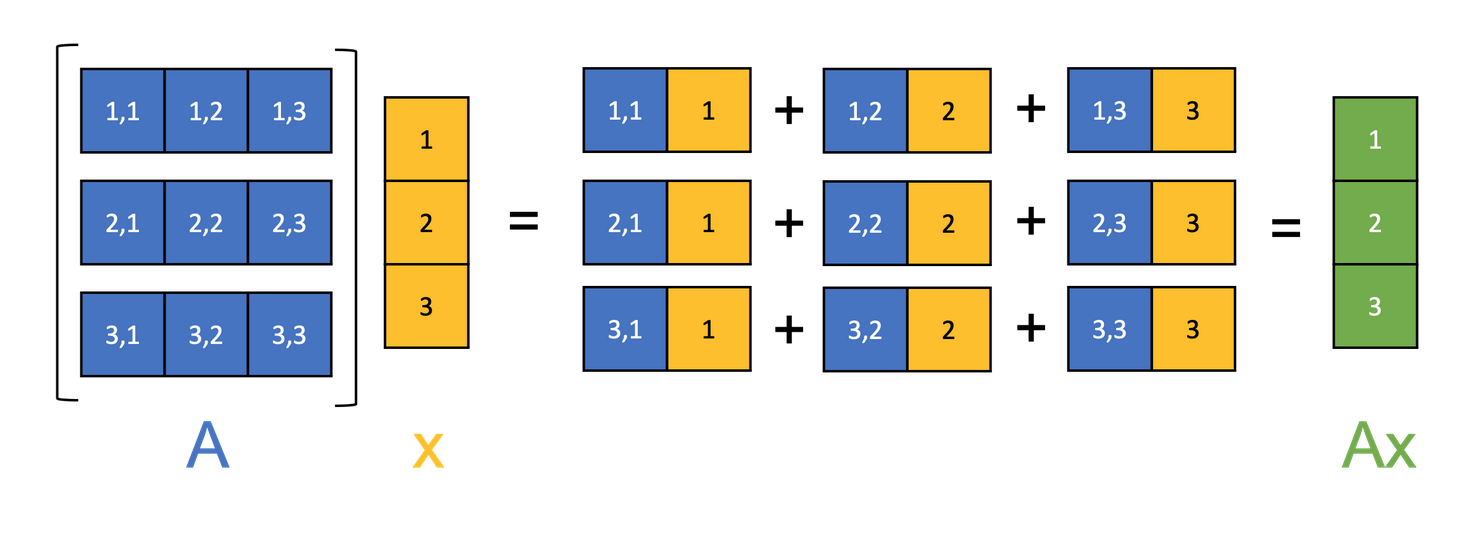Useful Equations and Links
Table of particles
Simple (basic) particles include fermions (leptons, quarks) and bosons. Composite particles include mesons, baryons and strange quarks.
Simple particles
Wikipedia's simple particle set
Fermions
| Category | Flavor | Mass (MeV) | Spin | Charge (e) | Antiparticle | Notes |
|---|---|---|---|---|---|---|
| Leptons | , positron | |||||
| antimuon | unstable | |||||
| 1.78 GeV | antitauon | unstable | ||||
| (neutrinos) | 0 | antineutrino | flavor oscillation | |||
| Quarks | up | y | Gen 1 | |||
| charm | 1.27 GeV | y | Gen 2 | |||
| top | 172.5 GeV | y | Gen 3 | |||
| down | y | Gen 1 | ||||
| strange | y | strangeness -1, Gen 2 | ||||
| bottom | y | Gen 3 |
- Quarks build composite particles more than act independently
- Operate via strong force
- Antiparticles have opposite charge
- Mass in terms of
Table of quarks

Bosons
| Type | Mass | Spin | Charge | Force carrier | Notes | Notes on carrier |
|---|---|---|---|---|---|---|
| (photon) | 0 | 0 | Electromagnetic (interacts w/ charge) | Massless, only can't be 0. | ||
| (gluon) | 0 | 0 | Strong force | Ditto above | Strong charge is a complex 3-vector , each component "color charge" red/blue/green. | |
| bosons | 100 GeV | W: Z: | Weak force | |||
| Graviton | Gravity (relativistic energy) | Not found yet | ||||
| Higgs | 125 GeV | Higgs field | Particle mass is charge, insignificant compared to others. |
- These are the force carriers which cover fundamental forces.
- Photons and gluons are their own antiparticles.
Conservations
- Energy, momentum, and angular momentum are all conserved
- Spin on right can be different by integer 1s, but not by .
- Total electric charge
- Lepton number (number of leptons + antileptons)
- Lepton flavor (electron-ness, muon-ness, tau-ness conserved, except for neutrinos)
- Opposite neutrino if creation, same neutrino if decay.
- Whenever neutrinos are produced, weak force
- Weak force ignores this idea
- Baryon number (quarks + antiquarks in composite particles)
- Quark flavor (conservation of quark type)
- "Similarly, the only way for the strong or electromagnetic to get rid of a strange quark is to annihilate it with an anti-strange quark"
- Violated by weak force
Complex particles
Baryons: 3x quarks, Mesons: 1 quark, 1 antiquark, Antibaryons: 3x antiquarks,
- Leptons have baryon number of zero (not composed of quarks)
- Same with bosons
Which interaction?
- Short lifetimes (), only hadrons and composite particles likely strong force.
- Flavor conserved.
- Medium lifetimes , photons involved, likely electromagnetic.
- Flavor conserved.
- Long lifetimes , results include neutrinos and leptons, likely weak force
- Flavor violation allowed.
Group theory
In mathematics, a group is a set with an operation that combines any two elements of the set to produce a third element within the same set and the following conditions must hold.
- : general linear group, all invertible matrices
- : unitary group, all matrices such that
- : belong to and have
- : belong to , only made with real numbers
- : belong to and have unit determinant
Misc
Matrix-vector mult:

Commutator of two operators is
- If zero, share same eigenvalues
is the "rest length", is the "rest time".
Finding eigenstuff
Eigenvalues:
Eigenvectors:
eigenvalue, corresponding eigenvector
Quantum stuff
is the spin (angular momentum) quantum number, is the spin component quantum number.
Operator
For example: